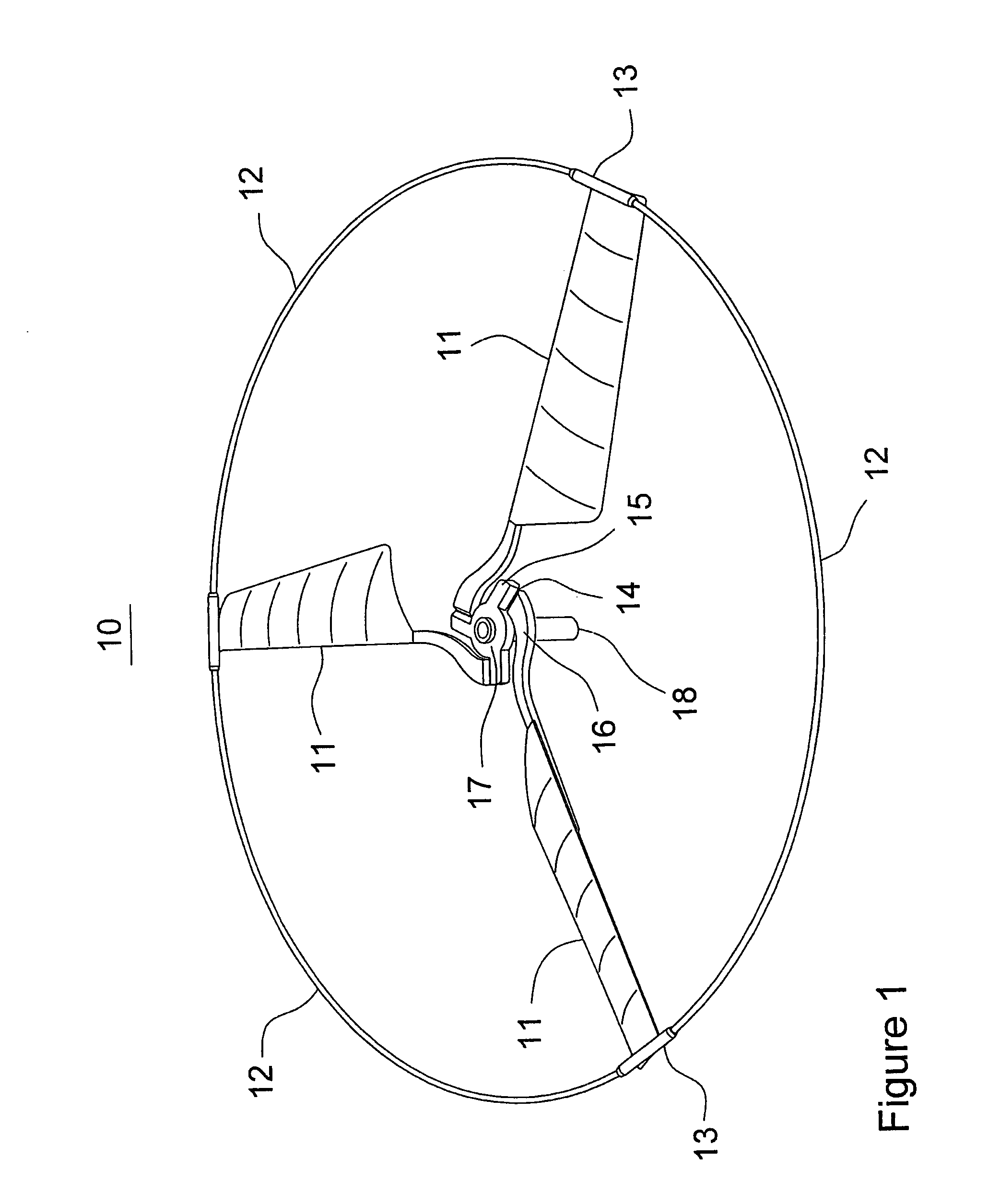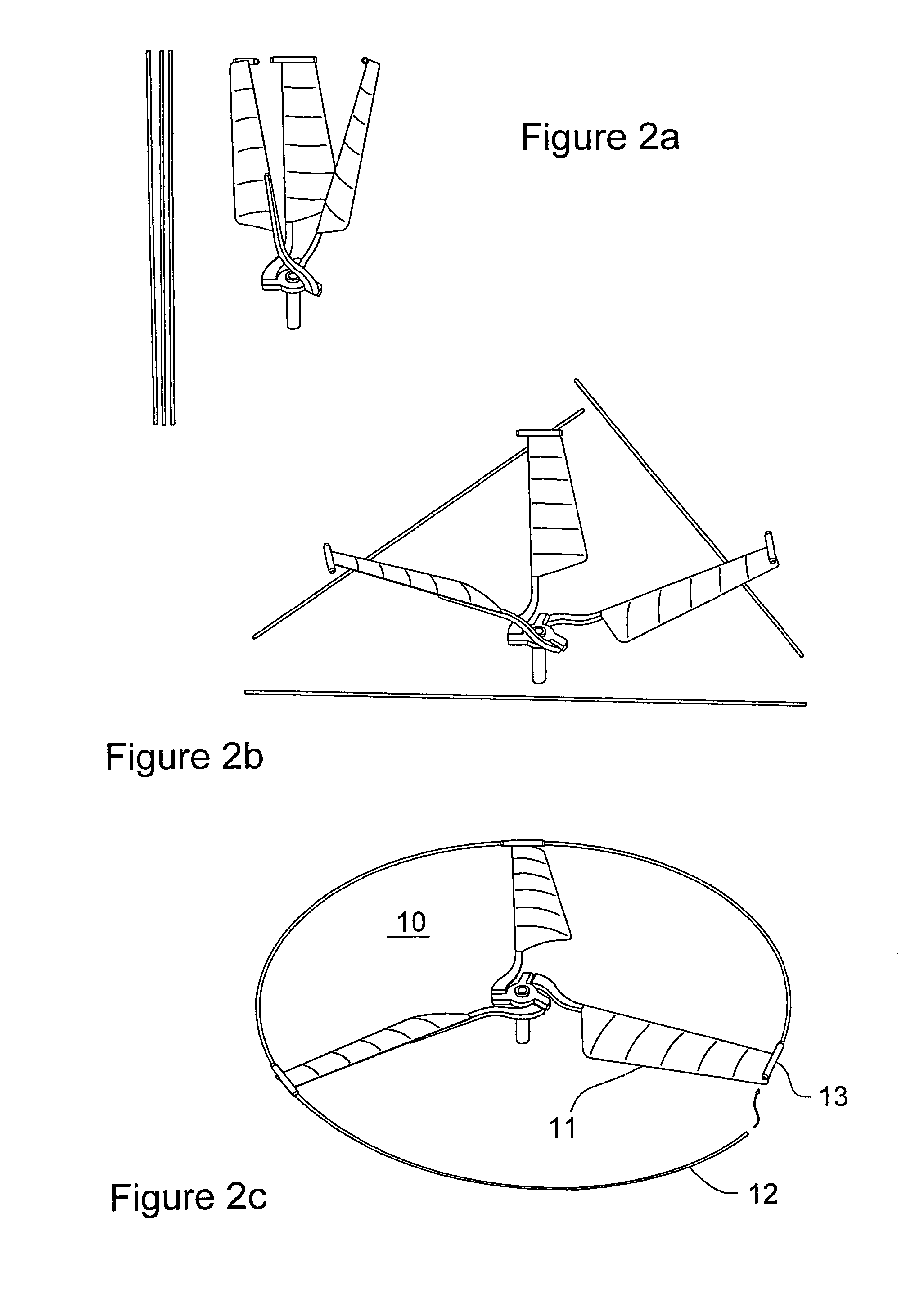Rotor for passively stable helicopter
- Summary
- Abstract
- Description
- Claims
- Application Information
AI Technical Summary
Benefits of technology
Problems solved by technology
Method used
Image
Examples
Embodiment Construction
[0034] In the following the present invention will be discussed and the preferred embodiment described by referring to the accompanying drawings. Some alternative embodiments will be described, however, people skilled in the art will realize other modifications within the scope of the invention as defined in the enclosed independent claims.
[0035] In FIGS. 1 and 2 the preferred embodiment of a rotor according to the present invention is shown. The rotor has a rotating plane defined by the path that the tip of the rotor blades follows when the rotor rotates and a fixed reference plane being perpendicular to the rotor shaft axis.
[0036] By designed a rotor system according to the principles described in US2004 / 0245376 (the entire contents of which are hereby incorporated by reference) an aircraft will be able to achieve passively stable hover. This implies that the rotating plane must be able to tilt in any direction with respect to the reference plane, furthermore the rotor blades mu...
PUM
 Login to View More
Login to View More Abstract
Description
Claims
Application Information
 Login to View More
Login to View More - R&D
- Intellectual Property
- Life Sciences
- Materials
- Tech Scout
- Unparalleled Data Quality
- Higher Quality Content
- 60% Fewer Hallucinations
Browse by: Latest US Patents, China's latest patents, Technical Efficacy Thesaurus, Application Domain, Technology Topic, Popular Technical Reports.
© 2025 PatSnap. All rights reserved.Legal|Privacy policy|Modern Slavery Act Transparency Statement|Sitemap|About US| Contact US: help@patsnap.com



